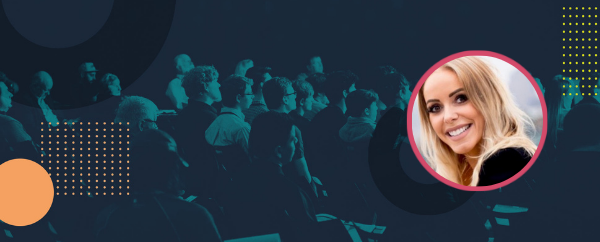How do you get buy-in from stakeholders
Originally created for Association Meetings International read the full article here
One of the ongoing challenges facing many event professionals operating within associations, networks and membership organizations is the ability to implement change. This is particularly an issue when looking to modify a significant element of the event such as the format in which it’s delivered, location or frequency.
Many businesses collect vast amounts of data post event but fail to put the results to use. In a recent podcast, the vice president of Meta, Nicola Mendelsohn, spoke to the challenge of change:
“I’m open to change my mind if I see evidence and data. There’s a poster on the [office] wall ‘Data Wins Arguments’. I like that because I think it’s true. Data allows you to really look at something and know if something isn’t going well to stop it.”
Effecting change can be difficult, with time, resources and inclination being three of the prevalent blockers.
At Explori, we believe framing the data and insights garnered from your events in a proactive and productive way can help influence change and overcome many obstacles, particularly amongst your most senior stakeholders.
Know your audience
Being able to play the data back to your stakeholders in a way that engages them, and more importantly, encourages them to act on the insight, is vital.
From the beginning, your event data strategy should speak to the wider organizational goals and objectives and be agreed by all parties. What does success look like for a given event or portfolio of events, and what data points are therefore central to measuring performance against this success criteria?
You should also detail how the findings will be communicated back to the different stakeholders involved with the event and how will the findings be acted on. These elements are interlinked – the more apposite the communication of the findings, the more likely they will be acted on.
Communication is key
You can have the best data strategy and collection process in the world, but if the findings are poorly played back to the event’s stakeholder group, then the effort risks being largely wasted.
At the heart of this, the key mantra is that one size absolutely does not fit all. Each of your stakeholders with have different levels of seniority, with different business focusses and insight needs. Some will respond well to granular details whilst others will want headline statistics. Others will enjoy a more visual presentation; others simply want the numbers!
A fundament task when mapping out the stakeholders for your data project is to fully understand who your stakeholders are and how they like to be communicated to.
For example, it’s unlikely that the C-Suite level stakeholders are going to want to be presented with a 10,000-row spreadsheet with raw data. Whilst those in an operational role, who are perhaps more likely to have a remit to implement day-to-day changes on the back of the data, will find a 'Top 3 takeaways’ summary insufficient.
However, both groups will be reassured that the other type of output exists – the C-Suite, that there is a detailed data analysis underpinning the key messages, and for the operational stakeholders, the takeaways provide an initial steer into the data that they can follow-up on with the more granular outputs.
Here are some top things to consider when presenting insights:
- Think about the optimal timing of the playback session. All day is likely to be too long and difficult to keep focus, and from an organizational perspective, very tricky to coordinate calendars and get everyone together. One hour? Likely to be too short. Think about what you want the outcomes to be, then use an estimate of how long you think each section will take to determine the optimal meeting length
- Be as engaging and interactive as possible. Be clear, visual and pitched at a level that can be understood by the whole group. Try: “What do we think about this?” “Can we shed any light on it?”
- Talk to them personally For example, “I know you felt there was a problem with the app. Here’s what we found re. the extent of the problem, and some suggested solutions from users. Do we believe any of these would work?”
- Qualitative findings can help engage the audience, building on any quant data. Hearing customers’ voices directly adds colour to the quantitative findings. Additionally, look to get your stakeholders involved in recommending customers to participate in the research process - this enhances their engagement and buy-in from the start of the process and they will be particularly keen to hear the results from their nominated contacts.
Act Accordingly
The next critical step is gaining buy-in to ACT on the findings. In other words, what will come of all the efforts that have been expended to collate the data?
This is partly empowerment – ensuring (again, ideally provided from the outset) that team members have authority to implement changes on the back of the findings. But it also once more comes down to communication approaches.
You will likely have brought all your stakeholders together to agree a data strategy based on your organization or event’s specific goals and objectives. It’s now time for you to reconvene this group and determine an action plan based on the results.
Be clear here on priorities and make sure the number of actions is kept to a manageable number – particularly for an individual stakeholder/team.
Some actions may be small, however some of the more significant changes will involve engaging third parties and may not be ready to action immediately. Don’t kick these into the long grass, instead look to reschedule a meeting to review these changes on a regular basis and allocate a time in which they will be addressed.
Documenting this process is key to engendering accountability amongst those involved and overall, ensuring the insights successfully leads to actions.
In conclusion
Change within business can be tricky to navigate. At times it can feel like an uphill task, particularly when your faced with multiple stakeholders. Remember, it’s human nature to resist change and can make some individuals feel vulnerable or nervous. Having a good data strategy in place, well-delivered insights, and a measurable action plan will help alleviate many fears and give your organization a solid foundation on which to build a positive customer-centric future.
***
Like this? Download your free copy of The Power of Data Insights for Associations - Turning Insight into Revenue.
.png?width=150&height=61&name=explori_logo%20(1).png)


